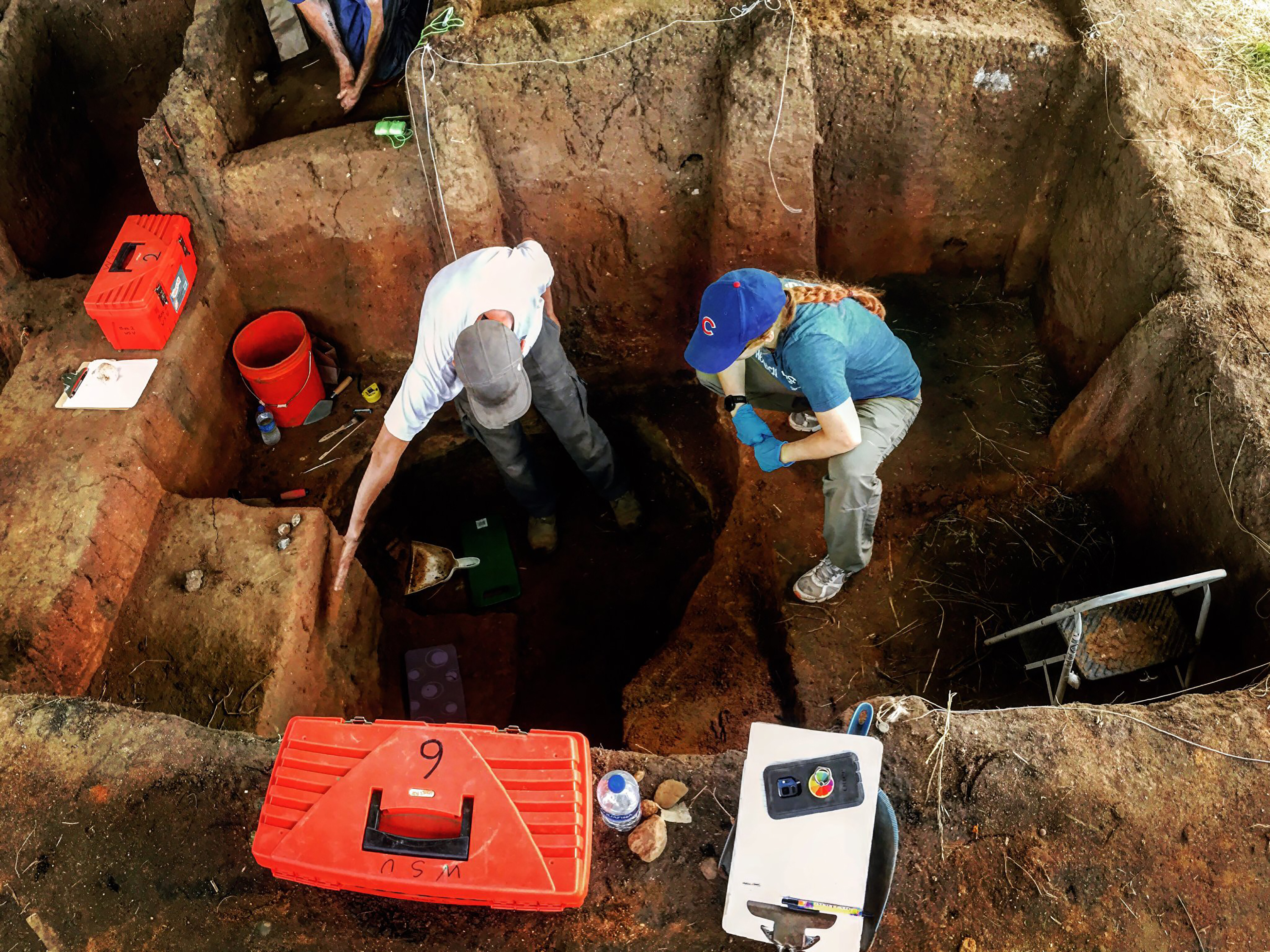You can tell a lot about people based upon what they eat – culture, preferences, geography and overall health. Food is not only nourishment, but it’s a message to anthropologists, like Wichita State University’s Dr. Crystal Dozier, to help understand the past.
“I imagine that during this pandemic, more people are paying attention to where their food comes from and they've never thought about that before,” said Dozier, assistant professor of anthropology and director of the Archaeology of Food Laboratory at Wichita State. “That’s essentially the kind of research that we're doing in this lab. You can tell so much about ancient societies based on what they're eating, how they're cooking it, who's responsible for cooking, how that food is distributed.”
The Food Research Lab in Neff Hall studies humans’ relationship with food throughout history. A majority of the work that's done there is microfossil analysis of primarily plants that are left on archaeological artifacts.

Dr. Crystal Dozier
"We can tell what people were cooking and eating and working with by looking at these microscopic pieces of plants,” Dozier said.
Sometimes food research includes what happens when it leaves the body – in other words, poop. Or to put it more scientifically, coprolite — “the archaeological term we used for desiccated feces,” Dozier said.
In 2019, Dozier and two of her colleagues were tasked with analyzing more than 1,000 samples of 1,500-year-old poop that was found in a cave in southwest Texas.
“You can tell a whole bunch of information based on what people were eating,” Dozier said. “Inside one coprolite, we figured out that they were eating a lot of cactus pads, and you can see the fibers. There was a lot of bone in this coprolite, part of which was part of a likely pack rat or small rodent, including some of the hair of the rodent.”
It turned out that the cactus and rat were not the most interesting items found in the 1,500-year-old poop.
“The really headline-grabbing aspect of this particular study was the fact that we had found a venomous snake fang in the coprolite along with the rims and scales of a venomous snake,” Dozier said.
Take a minute to digest that: a snake fang inside poop.
Assistant professor of anthropology and director of the Archaeology of Food Laboratory at Wichita State
“To our knowledge, this is the only published instance of a human eating the head of a venomous snake. People eat snakes all the time, but there is no reason to eat the head of a snake nutritionally, not even if you're starving,” she said.
According to the study, which was published in the Journal of Archaeological Science in June 2019, ingestion of the snake head and fang was likely part of some sort of ritual or ceremony rather than nutrition.
As dangerous as eating a venomous snake might be, it was likely not the cause of death for the eater in question — at least not immediately.
“We know that the person made it to the point of defecation or made it to the bathroom because it was found in a latrine,” Dozier said.
Unfortunately, or fortunately, most of Dozier’s work doesn’t involve digging through millennia-old poop.
“Coprolites only survive in really unique areas, and Kansas is not a very good depositional environment for keeping poop for thousands of years. They decay too fast, so we're focusing on other things,” she said.
Currently the lab research team is working very closely with the excavations at Etzanoa, which is a lost city near Arkansas City and recently discovered by Wichita State professor Donald Blakeslee.
“We are working on looking at microscopic remains in the pottery recovered from that site as well as what’s in the sediment and possibly ancient agricultural fields,” Dozier said.
The lab is also expanding to study zooarchaeology, which is the study of animal bones.
“Most animals that humans encounter, we encounter them for food purposing,” she said. “When we find bones at an archaeological site, they can tell us about what people were eating, and it also tell us really interesting things like how they're cooking. Are they making steaks or stews? Are they making things like pemmican, which is to jerky made with buffalo? It gives us an idea of how far they’re hunting, how far they’re going to get their food.”
Animals were not only valuable as a food resource, but also in making tools.
“You find a lot of tools made out of animal bones as well. At Etzanoa, we have several examples of bison scapula made into tools to help with farming activities. You also can make buttons and clothing fasteners and all sorts in jewelry out of bone as well. All those different aspects give us an idea of what those people's lives were like,” Dozier said.
Elayne Rye, a senior in anthropology, has worked in the Archaeology of Food lab for two years. Her research focuses on collecting data to study the effects of acetolysis processes on starch.
“I measured several hundred starch granules under a microscope. We also conducted a sister experiment to test if acetolysis destroys starch granules,” Rye said. “We are still collecting data on this project, but after we run our tests, I will be counting starch granules and lycopodium.”
After graduation on May 16, Rye will go on to work toward a master’s degree in the Wichita State anthropology program.
“The research projects I have assisted on have given me a lot of experience with lab procedures and expectations. After working with starch for the past two years, I have a better understanding of what I plan to do with my career path and the skills necessary to flourish in my choice of study,” Rye said. “Working with Dr. Dozier has been an amazing experience, and I feel profoundly lucky to have been given this chance to learn from her.”
Dozier says that the study of food archaeology provides valuable insight not only into the past, but it also informs us about the future.
“We're discovering new things about humans’ relationship to food by studying how people in the past ate,” she said, “and knowing the food habits of people in the past opens up new understandings for our food in the future.”


 Courtesy
Courtesy